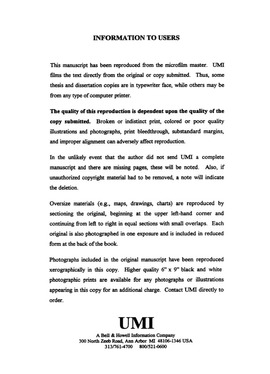| dc.contributor.advisor | Greene, Barbara, | en_US |
| dc.contributor.author | Foreman, Billy Allen. | en_US |
| dc.date.accessioned | 2013-08-16T12:29:58Z | |
| dc.date.available | 2013-08-16T12:29:58Z | |
| dc.date.issued | 1998 | en_US |
| dc.identifier.uri | https://hdl.handle.net/11244/5605 | |
| dc.description.abstract | One study finding is disappointing: that schematic maps do not promote greater map comprehension than do iconic maps. However, the study suggests that prior verbal instruction may have positive results for recalling map information. | en_US |
| dc.description.abstract | Results show that there was no significant difference in scores between those participants who viewed the iconic intervention maps and those participants who viewed the schematic intervention maps. All participants did learn, however, as postscore mean averages significantly exceeded prescore mean averages. Delayed posttest mean averages were lower than the postscore averages, but significantly higher than the pretest averages. This held true for all four groups whether the participants viewed the iconic intervention maps or the schematic intervention maps. | en_US |
| dc.description.abstract | Participants, on the same day, were pretested, and posttested before and after viewing interventions. Two weeks later, participants were delay posttested with the same iconic map used for the pretest and posttest. Little advanced verbal instruction was given participants as to learning from iconic or schematic maps. | en_US |
| dc.description.abstract | Participants in this study were fifth grade students in a midsize school district in a southwestern state. Participants were randomly assigned to one of four groups, two who viewed iconic intervention maps and two schematic intervention maps. | en_US |
| dc.description.abstract | This study examines how the learning of geographic information is affected by the organization of information presented on maps. A pretest, posttest, and delayed test format determined if there is any significant difference in the scores of participants who learned from viewing iconic intervention maps of Africa and schematic intervention maps of Africa. | en_US |
| dc.description.abstract | This study is of value in that if there are further studies using iconic and schematic maps, as there was no significant difference without verbal instruction as to how to remember and recall from either format, if instruction were given, any significance could be attributed to that instruction. | en_US |
| dc.format.extent | x 91 leaves : | en_US |
| dc.subject | Map reading. | en_US |
| dc.subject | Psychology, Cognitive. | en_US |
| dc.subject | Children's maps | en_US |
| dc.subject | Maps in education. | en_US |
| dc.subject | Education, Educational Psychology. | en_US |
| dc.subject | Geography. | en_US |
| dc.title | Iconic and schematic maps: A comparative study. | en_US |
| dc.type | Thesis | en_US |
| dc.thesis.degree | Ph.D. | en_US |
| dc.thesis.degreeDiscipline | Department of Educational Psychology | en_US |
| dc.note | Source: Dissertation Abstracts International, Volume: 59-01, Section: A, page: 0082. | en_US |
| dc.note | Adviser: Barbara Greene. | en_US |
| ou.identifier | (UMI)AAI9822822 | en_US |
| ou.group | Jeannine Rainbolt College of Education::Department of Educational Psychology | |
